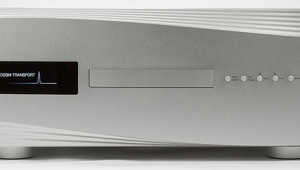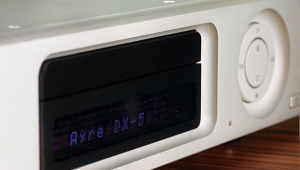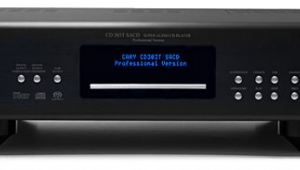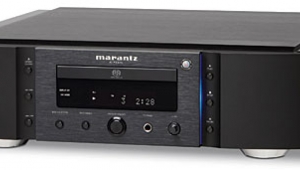| Columns Retired Columns & Blogs |
Ayre C-5xe universal disc player Page 2
Ayre's Steve Silberman insisted I employ some of Ayre's Myrtle Wood Blocks as component supports (they made a surprising difference—to my chagrin, having decided "intellectually" that they couldn't). He also insisted that I "treat" my system with Ayre's Irrational, But Efficacious! glide-tone disc—another tweak that I was convinced would make no difference whatsoever, but that removed several layers of grunge whether I believed in it or not. I then discovered that the MOVs in the Shunyata Hydra Model-8 I was using added a layer of "white" grunge to the V-5xe power amp, although the Hydra greatly enhanced the sound of the K-5xe and C-5xe.
Well, you get the idea: This turned into one of those reviews where everything made a difference—even hanging a 150-year-old Peruvian poncho on the wall behind the loudspeakers (although I must confess that I did not also try a 200-year-old or a 100-year-old poncho, so I cannot guarantee that the poncho's age is relevant).
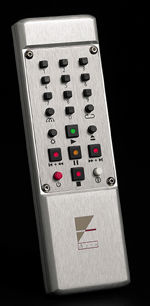 After all the dust settled, my preferred system was the Ayre stack driving the slightly modified Thiels (on which, at Hansen's urging, I had performed a tweetercoverectomy). What the Thiels lacked in bottom end they more than made up for in coherence and accuracy—properties that complemented the Ayre's strengths.
After all the dust settled, my preferred system was the Ayre stack driving the slightly modified Thiels (on which, at Hansen's urging, I had performed a tweetercoverectomy). What the Thiels lacked in bottom end they more than made up for in coherence and accuracy—properties that complemented the Ayre's strengths.
It's a fine line...
Most of my fiddling with the bits'n'bobs of system setup was performed using CDs, which, after all, remain the predominant recorded format—and, not so coincidentally, the one with which I have the most familiarity. The Ayre C-5xe is a fabulous CD player that extracted oodles of low-level detail from my favorite recordings while preserving the musical integrity that had drawn me toward them in the first place.
For example, it revealed all of the Boston Symphony Hall ambience and bloom I've come to love on Charles Munch and the Boston Symphony's recording of Berlioz's Symphony Fantastique, engineered by Mohr and Layton (CD, JVC XRCD JMCXR0001), without sacrificing any of the drama and impact. Impact? When the plucked basses enter during Reveries: Passions, I nearly jumped out of my seat. And then I sat up with my ears pricked as I heard those notes seek the corners of the hall before decaying into silence.
And the March to the Scaffold? Pure drama, baby—not to mention a tremendous amount of dynamic shading, sheer orchestral impact, and brass blattiness. The C-5xe had me alternately gasping at its audiophile precision—soundstage layering and breadth, spatial delineation, presentation of dynamic shading, et al—and swooning at its musical integrity (all of the same qualities, but with a different emphasis).
This repeated itself with minor variations as I familiarized myself with the new system configuration and old favorites during the break-in period: I marveled at the dynamic range, power, and pure swing of Basie Big Band (CD, JVC XRCD VICJ-60257), while submerging myself in the crystalline clarity of Ivo Janssen's emotionally compelling reading of J.S. Bach's Das Wohltemperierte Klavier (CD, Void 9805 AB). I stayed up late; I got up early. Didn't I used to have other hobbies?
Oh yeah. It's a good CD player.
Then I listened to SACD.
Last January, David Chesky had given me a copy of his recording of his concertos for flute and violin, and his setting of The Girl from Guatemala (Anthony Abel, Area 31 Ensemble; Chesky SACD288). I carefully filed it in my "to be played" pile, where it languished until I went looking for SACDs to audition on the Ayre C-5xe .
Holy cow! First, this disc is the real thing: modern American classical music that is tuneful, idiomatic, and wonderful. It ain't stuffy and it ain't crossover—it's vibrant and fun and completely compelling. It sounds good, too.
The Violin Concerto opens with a big Coplandish flourish of bouncy strings and timpani, with counterpoint provided by palmistas clapping rhythms that jump out of the speakers while defining the acoustic space within which the performance takes place. And how that space informs the recording!
Remember I said that the C-5xe's response specs go down to DC? I'll be interested in JA's measurements, because they'll have a reference range, but the Ayre's midbass to deep bass were revelatory with SACD recordings such as this. The first few seconds of the disc establish the recording venue with some of the deepest "room sound" I've ever heard.
The Flute Concerto's natural sound is, if anything, even better. If you love classical music, you have got to hear Chesky's new recording—and if you don't love classical music, that might be because you haven't ever heard anything as fresh and lively as Chesky's compositions. They might make a believer out of you. Especially if great sound is a priority, because the swirling violins, clanging chimes, and, yes, handclaps are rendered here with such fidelity and lifelike dynamics that you'll love the sound this music makes.
As well-recorded and well-realized as the Chesky disc is, as I began to listen to other SACD recordings, I began to realize that there is so much more to DSD-sourced SACD than I had previously realized. I knew—had heard for myself—that SACD sounded better than CD, but until I began working my way through the discs I already owned, I had no idea how much better. Not a little bit—a lot.
I'd previously compared the CD and SACD layers of Antony Michaelson's recording of Mozart's clarinet concerto, K622 (MFSACD 017), and had preferred the SACD version when I was auditioning an SACD player. However, I didn't feel unduly deprived when I had to listen to the CD layer at other times—it is a richly atmospheric recording, full of life and spirit, whether you listen in hi-rez or reg-rez. Of course, I could be wrong.
I was wrong. Michaelson's clarinet was woodier through the Ayre C-5xe, with a far more penetrating forwardness to its presentation. The solo instrument was definitely in front of and dominant to the Michaelangelo Chamber Orchestra. Bigger than life? Yes, but not annoyingly so, just enough to show you who got star billing on the disc.
Wowsers. So this is what all the fuss has been about.
I'm as guilty as the next audio nerd of thinking that we've pretty much conquered the sonic vista—how much more accuracy can we capture? The C-5xe proved that there's a lot more we can get out of recordings, especially with really good DSD recordings, such as these three SACDs: Paavo Järvi and the Cincinnati Symphony Orchestra's scarily good disc of Debussy's Prélude l'aprés-midi d'un faune, Nocturnes, La mer, and Berceuse héroque (Telarc SACD-60617); the Anthony Newman/Graham Ashton Brass Ensemble's Music for Organ, Brass, and Timpani (Son Ma SAC-001); and Ray Kimber's IsoMike Tests 2005 (Tests 2005A).
All of this abundance of sonic truthfulness made me wonder if it was just SACD that I'd underestimated, or all higher-rez formats. I pulled out my guilty-pleasure copy of Steely Dan's Everything Must Go (DVD-A, Reprise 48435) and loaded it into the Ayre. Because EMG has an animated menu, that's what loaded initially, but I was able to navigate to the 24-bit/192kHz program through the Ayre's control wheel without resorting to an external video monitor—just as advertised.
- Log in or register to post comments

